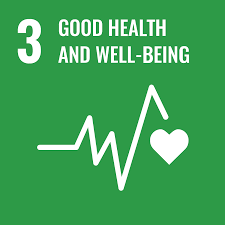Goal 3
Ensure healthy lives and promote well-being for all at all ages
3.6 By 2020, halve the number of global deaths and injuries from road traffic accidents.


Ensure healthy lives and promote well-being for all at all ages
3.6 By 2020, halve the number of global deaths and injuries from road traffic accidents.











By 2020, halve the number of global deaths and injuries from road traffic accidents: This target emphasizes the need to reduce road crash fatalities and injuries on a global scale.
By 2030, substantially reduce the number of deaths and illnesses from hazardous chemicals and air, water, and soil pollution and contamination: This target highlights the importance of addressing the various factors contributing to road crashes, including environmental factors and pollution.
Strengthen the capacity of all countries, in particular developing countries, for early warning, risk reduction, and management of national and global health risks: This target emphasizes the need for improved road safety infrastructure, policies, and interventions in developing countries to mitigate the risks associated with road crashes.
Driving at speed significantly increases both the likelihood of a crash occurring, and the severity of its consequences.
For every 1% increase in mean speed there is a 4% increase in fatal crash risk. The risk of death for pedestrians hit by motorized vehicles also rises rapidly as speed increases. A pedestrian hit by a vehicle travelling at 65 kilometres per hour is 4.5 times more likely to die than those hit by a vehicle travelling at 50 kilometres per hour.
Driving under the influence of alcohol or other psychoactive substances presents significant risk factor for road traffic injuries.
In the case of drink driving, risk of road traffic injury increases significantly as the driver’s blood alcohol concentration goes up. In the case of drug-driving, the risk of road traffic injury increases to differing degrees depending on the psychoactive drug used.
There are a number of other significant risk factors:
This vision was chosen to represent all parties, meaning individuals’ age and weaknesses are not barriers to safely moving to any destination. The public should be educated to comply with existing laws and drive safely through a comprehensive and holistic safe system approach. Although this dream is viewed as an enormous challenge, it is not impossible to achieve. The safe system approach can serve as the starting point for the future generation until it finally becomes a reality.
To realise the dream of making Malaysia a country withzero deaths on the road, cooperation, involvement, and support from various parties are essential both directly and indirectly. An effort to achieve a mission depends not only on the authorities but also on all leaders from different walks of life proactively creating the safe road system. To achieve the road safety targets set, all citizens in Malaysia have to make safety culture a norm and a daily routine.
2019 data will be used as a baseline or reference data until 2030 as it is in line with the target set by the UN and to ensure accuracy. Data in 2020 will not be taken into account due to the COVID-19 pandemic, which has an abnormal effect of reducing road crashes, injuries, and deaths. Thus, the target set in 2030 must be at least 50% from 6,167 deaths in 2019. An average reduction of 309 deaths per year is targeted to be achieved in this target.